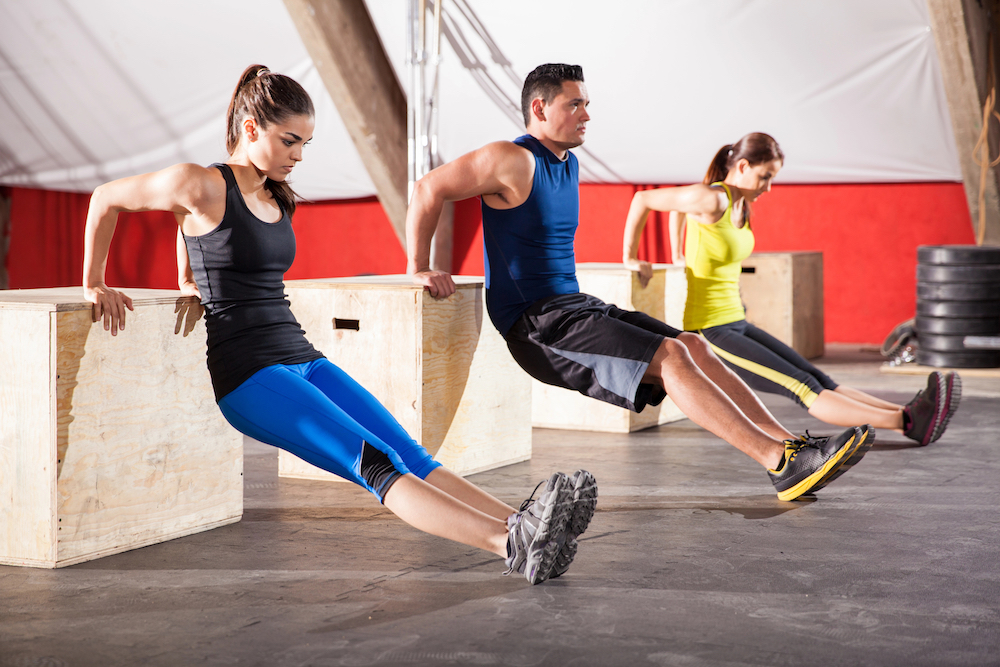Typical Crossfit injuries
The topic
How to prevent typical Crossfit injuries ?
The expert

Antoine Comte
Sports PhysiotherapistSummary
Key takeaways
- The 3 main areas to look after are : shoulders, knees and lumbar zone
- Developing force is important
- Going progressive and slow are two important aspects
Interview Highlights
What are the most common pathologies encountered in CrossFit?
“Studies have been carried out on this subject, and what emerged were three most affected areas : shoulders, lumbar and knees. There are a lot of overload injuries. It’s either beginners who are just starting out and don’t have the right technique for what they need to do, or high-level practitioners who are exposed to very heavy loads, lots of repetitions and who sometimes get hurt, but between the two it’s a sport where you don’t get hurt as much as in team sports, for example.”
What causes shoulder injuries in CrossFit?
There are two types of movement; we’re talking about overhead movements, where the hands are above the head, and there are two things that can happen. There are movements with loads, with a bar, where you bring the load above your head, so these are positions that are quite difficult from a stability point of view, and also from a recruitment point of view, it puts a load on the shoulder structures. The heavier you put on, the harder it is, the faster you go, the more stress it puts on the shoulder, that’s the first thing.
And the other overhead movements which are quite demanding are those where you’re suspended from a bar, i.e. bodyweight movements such as pull-ups, muscle-ups, pull-ups with momentum, and kipping…
There’s a confusion that arises in the CrossFit logic, because first you have to develop strength to have, for example, strict pull-ups that are correct and clean, so that you can then add momentum and be able to do kipping pull-ups. Except that sometimes people who have started kipping with a lot of momentum on their shoulders don’t necessarily have the strength to stabilize them. As a result, their shoulders are in a bit of a bind, because they need to find the in-between position.
Kipping is a good way of finding this in-between, because it means that people who have difficulty releasing their first traction don’t have to spend three years doing zero traction. But, when we identify that a person doesn’t have enough shoulder strength to support their workload, that’s when we need to be vigilant.
What about lower back pain in CrossFit?
In terms of lower back pain, there’s a lot of mechanical lumbago that sets in, based on the same system of overloading. There’s a link between technique, the load used and load repetition. Take the deadlift, for example. Some people who do deadlifts have perfect technique, but can suffer lower back pain because they’ve put too much weight on too often. For example, people who didn’t do deadlifts or muscle strengthening before, who start CrossFit, do well because they have good skills and gain confidence in the movement, but perhaps go a little too fast, too hard. Or people who are doing well, who stop for a while for one reason or another – vacations, I fell ill, I wasn’t available – and who come back to the sport, who want to let off steam and who put in a big session all at once without going through a short warm-up period. That’s the kind of case we see too. After that, there are people who are well-prepared, but who are sometimes exposed to injuries all the same.
What about knee injuries?
Pain such as the ilio-tibial band syndrome or lateral knee pain arise because we’re doing a lot of repeated bending movements, sometimes with jumps, sometimes with running and running under fatigue. In other words, we’re not using optimal running technique. Sometimes because people don’t know how to do it, and sometimes just because they’ve had 300 repetitions of a movement that’s exhausted their legs, and we ask them to run 800 meters after that. So they’re going to run trying to save their legs, so they’re going to slack off a bit, which isn’t ideal. There are also trauma-type pathologies that occur with meniscal lesions, sometimes in people who carry a lot of weight, who have a little less control over the end of the squat, who bounce a little on the bottom of the squat, and who land on bars in positions that are a little hard on the knee. There’s no impact like in contact sports, but there is an impact with bar landings, jump landings, in fairly large amplitudes. So, in fact, all of this also exposes the knee to a degree of traumatic pathology.

